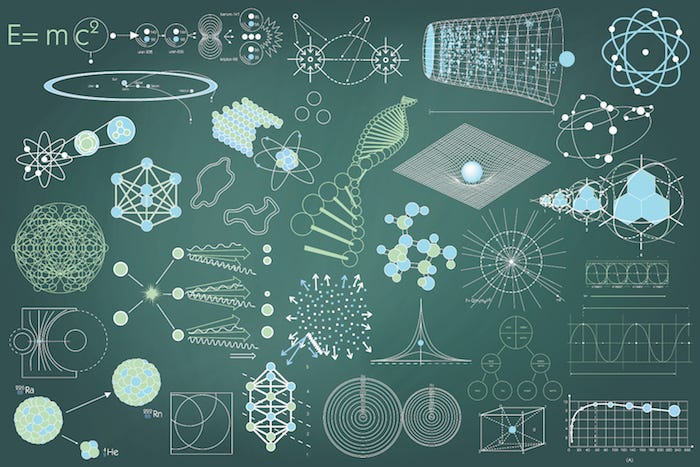Axial: https://linktr.ee/axialxyz
Axial partners with great founders and inventors. We invest in early-stage life sciences companies such as Appia Bio, Seranova Bio, Delix Therapeutics, Simcha Therapeutics, among others often when they are no more than an idea. We are fanatical about helping the rare inventor who is compelled to build their own enduring business. If you or someone you know has a great idea or company in life sciences, Axial would be excited to get to know you and possibly invest in your vision and company. We are excited to be in business with you — email us at info@axialvc.com
Constructor theory proposes a new perspective on fundamental physics by focusing on the dichotomy between possible and impossible physical transformations, departing from the approach of predicting what will happen from initial conditions and laws of motion. It is motivated by the potential to become a fundamental branch of physics, with suggested first principles and the capacity to solve problems and achieve unifications. These include providing a theory of information underlying classical and quantum information, generalizing the theory of computation to encompass all physical transformations, unifying conservation laws with operational principles like ruling out perpetual motion, expressing testability and computability as physical laws, enabling precise statements of emergent laws like thermodynamics, and expressing seemingly anthropocentric concepts like knowledge in physical terms.
The work proposes an ambitious new framework for formulating the laws of physics, centered around the notion of "construction tasks" or transformations that can be physically realized. The core idea is to replace the prevailing conception of fundamental physics, which aims to predict how a given initial state evolves over time according to dynamical laws, with a conception focused on the dichotomy between possible and impossible physical transformations - which transformations can be caused to happen by some "constructor" system and which cannot.
Deutsch argues that many deep problems in physics arise from limitations of the prevailing conception, and that formulating physics in terms of construction tasks could provide a unifying language for disparate branches of physics and resolve foundational paradoxes:
Providing an exact statement of the second law of thermodynamics and bridging the apparent conflict between thermodynamic irreversibility and the time-symmetric laws of motion. Constructor theory allows some tasks to be possible while their reverses are impossible.
Expressing conservation laws more strongly as constraints on what tasks are possible rather than just continuity constraints on dynamics. This rules out perpetual motion machines more forcefully.
Expressing the computability of nature as a law of physics by postulating the possibility of a "universal constructor" that could perform any possible task. This generalizes the Church-Turing thesis beyond abstract computation.
Unifying the principles of information theory, computation, and the theory of knowledge within a constructor-theoretic framework, as these are fundamentally about what tasks involving information processing and transmission are possible.
Providing an intrinsic treatment of time, rather than taking it as an extrinsic parameter, by defining "timers" as particular possible construction tasks.
Resolving philosophical confusions around counterfactuals, causation, and laws vs accidental regularities by grounding these notions in the Modal structure of possible vs impossible tasks.
A significant portion of the paper is devoted to examining how various concepts from existing physical theories could be re-expressed in constructor-theoretic terms as constraints on which tasks are possible or impossible. Deutsch explores how known laws and phenomena like conservation laws, thermodynamics, quantum theory, general relativity, computability, and the theory of knowledge might manifest as particular patterns in the "algebra of tasks."
For example, he suggests additive conservation laws would correspond to certain complementary possible/impossible task combinations, the second law would correspond to irreversible tasks whose reverses are impossible, and interoperability principles for quantities like information, work, and heat would express their substrate-independence. A key part of Deutsch's proposed formalism is the composition principle - that any network of possible construction tasks should itself be possible to perform as a single task. This provides a way to build up complex constructions from simpler allowed pieces.
Deutsch also introduces the concepts of "pharaonic tasks" which require constructing the constructor itself from naturally occurring resources, "repertoires" defining the possible tasks a programmable constructor can perform, the possibility of abstract constructors like knowledge, and principles for interoperability between different physical substrates.
While presenting no full systematic theory, Deutsch outlines numerous speculative principles that could feature in a constructor theory, such as the existence of a universal constructor, the interoperability of information, the locality principle, and the intrinsic definability of concepts like simultaneity. He argues these principles should follow from a deeper constructor-theoretic foundation, whereas in the prevailing conception they appear as separate postulates. A major thrust is the contention that many core issues like the origin of the universe's low-entropy condition, the possibility of perpetual motion, the nature of time's arrow, and the validity of counterfactual reasoning could all be derived as emergent consequences within a self-consistent constructor theory - removing the need to postulate them as separate laws or metaphysical principles. In essence, Deutsch is proposing an ambitious research program to reconstruct physical theory from the ground up in terms of modalities over transformations rather than dynamical laws. Whereas conventional theories take the nomological side of "what happens" as primary and explain the Modal "what can happen" in terms of it, constructor theory would reverse this order and make nomological statements about dynamics emergent from deeper Modal constraints.
The envisioned benefits include a unification of many branches of physics, a more natural formulation of probability and uncertainty, the elevation of currently ill-defined but indispensable notions like knowledge and information to the bedrock of physical theory, resolution of long-standing paradoxes, and perhaps most radically, the potential to make the origin of the universe's specific initial condition an explicable consequence rather than an inexplicable input. At the same time, Deutsch acknowledges profound open challenges and uncertainties. Aside from the sheer ambition of reconstructing fundamental physics, developing the mathematics to explicitly characterize patterns of possible/impossible tasks seems a formidable technical obstacle. There are also open questions like whether the framework can accommodate classical dynamics as a limit, what the status of space and time would be in a constructor theory, and whether it is even coherent for the framework to derive itself within itself.
Overall, the constructor theory proposal exemplifies the quest in physics for deeper layers of explanation that can derive more from fewer first principles and ontological primitives. Deutsch boldly conjectures that the prevailing conception of dynamical laws acting on states may be a nonfundamental level of description, akin to the theories it supplanted, and that an entirely new Modal framework taking transformations as primordial may be required. While still highly unformed, constructor theory attempts to chart a path toward reconstructing core concepts of physics in terms of computational notions like tasks, information, and construction itself. Realizing this aim could achieve extraordinary theoretical unification, but will require both considerable hardnosed technical work and deep rethinking of some of the basic premises underlying current physical theory.




